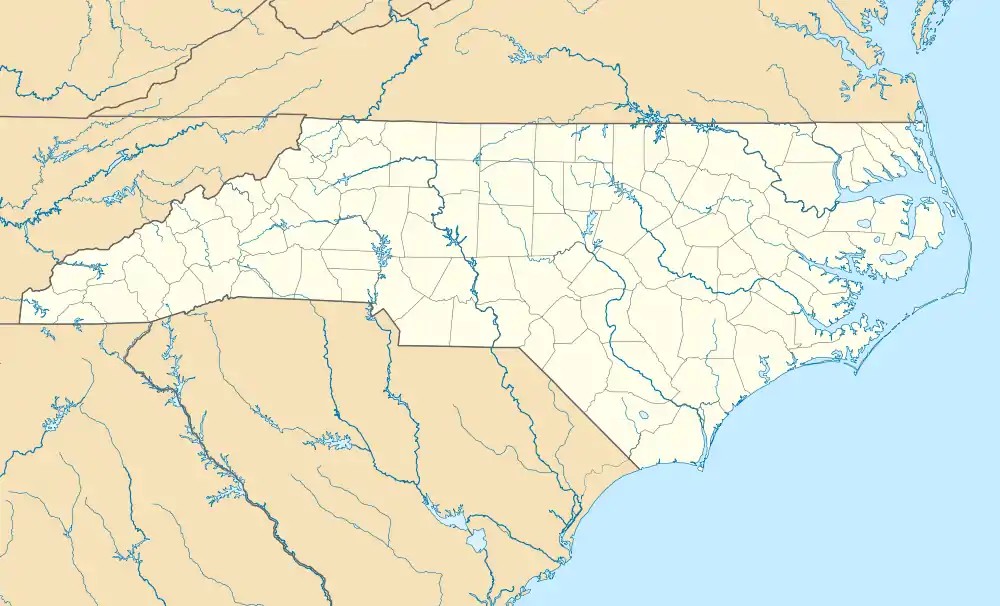James Bryant House
James Bryant House is a historic home located near Harris Crossroads, Moore County, North Carolina. It is dated to about 1820, and is a two-story, three-bay, single-pile frame farmhouse. It rests on a fieldstone pier foundation, has a gable roof, shed porch, and rear shed rooms. The house has been restored.[2] It was added to the National Register of Historic Places in 1982.[1]
James Bryant House | |
 | |
  | |
| Location | On SR 1210, near Harris Crossroads, North Carolina |
|---|---|
| Coordinates | 35°19′7″N 79°32′41″W |
| Area | 3.4 acres (1.4 ha) |
| Built | c. 1820 |
| NRHP reference No. | 82003490[1] |
| Added to NRHP | April 15, 1982 |
The McLendon Cabin beside the house served as a detached kitchen after the larger house was built. It was constructed by early settler Joel McLendon c. 1758-1760. The one-room log dwelling, representative of those built by the early settlers of the region, is the oldest house in Moore County on its original location.[3] It has been described as "a well-proportioned structure whose early features reflect exacting workmanship."[4] Standing approximately 40 feet (12 m) to the side of the James Bryant House, it served as a kitchen after the larger house was built. It was restored in 1970 by the Moore County Historical Association.[3]

References
- "National Register Information System – (#82003490)". National Register of Historic Places. National Park Service. July 9, 2010.
- Karin Kaiser and Jim Sumner (September 1980). "James Bryant House" (PDF). National Register of Historic Places - Nomination and Inventory. North Carolina State Historic Preservation Office. Retrieved 2015-02-01.
- McLendon Cabin, Moore County Historical Association, https://www.moorehistory.com/mclendon-cabin.html, accessed 24 June 2022.
- Karin Kaiser and Jim Sumner (September 1980). James Bryant House, National Register of Historic Places Nomination and Inventory, North Carolina State Historic Preservation Office, https://files.nc.gov/ncdcr/nr/MR0008.pdf (pdf), retrieved 24 June 2022.

